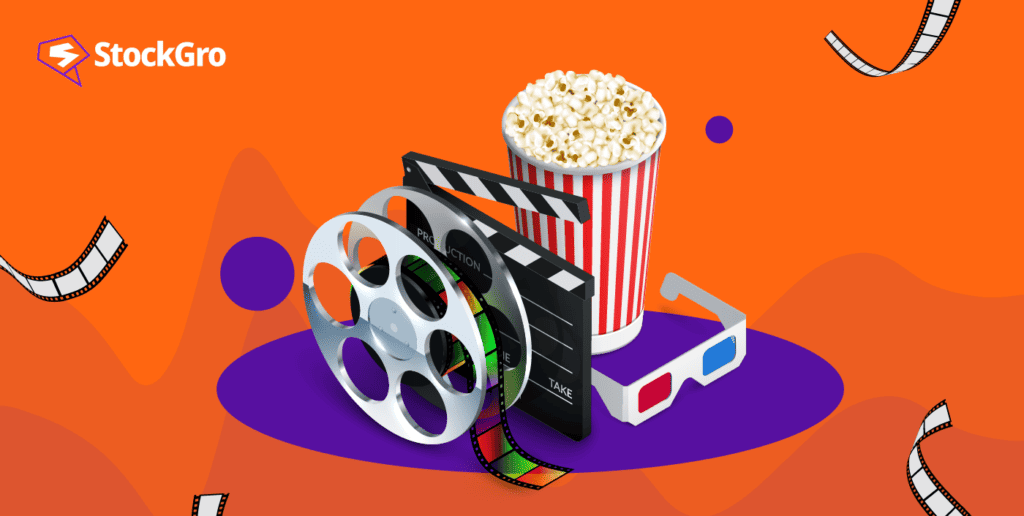
How do you spend your free time? Well, the answer to this is different for every person. But social media, books, or at least web series are part of most of our lists. Do you agree?
For those without an inclination to this entertainment area, the COVID-19 pandemic must have been a game changer. Spending time indoors today is almost synonymous with watching movies or series and reading books. Are you interested in learning how our entertainment significantly contributes to the economy? Read further to know.
What does the media and entertainment industry cover?
The media industry covers all forms of informational and entertainment-based content in digital, print and other forms, including live shows. It includes content on television, radio, books, newspapers, social media, OTT (Over the top) platforms, theatres (Both movie and drama theatres), gaming platforms, etc.
It includes everything that provides entertainment to the audience, online or offline. The oh-so-popular stand-up comedy shows are also part of media and entertainment.
You may also like: Lights, camera, invest: Pop culture’s impact on investment trends
History of the media industry in India
Most mediums, like television and social media, which are integral parts of our lives, did not even exist 100 years ago. So, the history of media in India is relatively fresh.
However, print media has been in existence for many years now. The first newspaper in India was published in 1780 under the name “Hicky’s Bengal Gazette”. The newspaper was written by a Britisher and was short-lived. Then followed the Indian newspapers like Bombay Times in 1838, which continues to run as Times of India today.
What followed the print media was radio in 1923. It was during British rule and was operated by India’s first radio club, “Bombay Presidency Radio Club”. In 1927, other private radio players came in. Soon, the government took over the broadcasting channel and called it “All India Radio”, which is popular till today in the name of Akashavani.
After the radio came the famous television, the first television in India was an experiment in 1959 in New Delhi. It slowly expanded to other states and began telecasting news. Doordarshan, part of All India Radio, was the only channel back then. Gradually, entertainment through art forms like drama, music, dance, etc., was introduced. 1976 saw the first commercial advertisement of Gwalior Suitings on TV.
In the 1980s, the first set of television series – Ramayan and Mahabharat, were produced and telecasted on Doordarshan. The 1980s was a new era in the media industry, as this decade was a witness to colour TVs in India.
Contribution of media and entertainment to the economy
Televisions soon became popular in the country. By the mid-1990s, more than 70 million homes in India had televisions.
Then came everybody’s favourite – the social media. Orkut was the first social media platform introduced in India. It was well-received, especially among Indian youth, until Facebook came in 2006.
Today, Facebook is hardly used because social media users are addicted to the most-loved Instagram, which came to India in 2010. The same year saw the launch of WhatsApp, and today, the number of social media applications is innumerable.
Today, social media is not just here for entertainment but is a career and the primary source of income for many influencers.
- The media and entertainment sector in India is expected to be a $100-billion industry by 2030.
- The digital media segment reached $2.9 billion in 2022, with a growth of 30%.
- Online gaming is expected to reach $2.8 billion in 2025, from $1.6 billion in 2022, with a growth rate of 34%.
- The Indian films in 2022 earned $1.2 billion, with 1,600+ films being released.
- Animation and VFX segment will reach $2.3 billion by 2025, with a growth of 29%.
Also read: Zee-Sony merger to pave way for $10 billion media giant after NCLT nod
Current trends in the entertainment industry in India
- Social media is one of the most popular trends in the country today. Everybody, from teenagers to old age, uses at least one social media application today. Statistics show that India ranks number two globally in terms of the number of people using social media applications. As of early 2023, India saw a social media penetration of 33%.
- Another popular trend today in the field of media is OTT (Over The Top). We may or may not the full form of OTT, but we all use at least one of them. As of Dec 2022, India had 42.38 crore viewers on OTT platforms. The OTT market is expected to reach ₹30,000 crores in 2030 from ₹10,500 crores in 2023, with a growth rate of 20% annually. India ranks number one globally in terms of the number of hours spent on video streaming applications, with a total time of 194 billion hours.
- The other popular trend, especially among youth, is online gaming. Considering gaming application downloads, India ranks number one globally. The gaming sector is expected to reach $231 billion by 2025.
- Digital advertising is another trend in the media sector. Television was the only source of commercial advertisements back in the day. Today, digital advertising has become so popular that it constitutes nearly half of the overall spending on advertisements in the country. Digital advertising refers to marketing on websites, social media, OTT platforms and others. As of 2022, the digital advertising market grew 30% to $6.1 billion.
Top stocks in the media and entertainment sector
Below are the top stocks in different segments of the media and entertainment sector, based on their market capitalisation (As of 08 Dec 2023):
- Film production, distribution and entertainment
Name | NSE share price | NSE market capitalisation(In ₹ crore) | BSE share price | BSE market capitalisation (In ₹ crore) |
| PVR INOX | ₹1,747.80 | ₹17,111.46 | ₹1,746.00 | ₹17,151.69 |
| Saregama India | ₹375.75 | ₹7,304.59 | ₹375.30 | ₹7,241.92 |
| Tips Industries | ₹357.35 | ₹4,571.99 | ₹358.40 | ₹4,566.21 |
| Prime Focus | ₹106.80 | ₹3,230.50 | ₹106.80 | ₹3,269.44 |
| Media Matrix | – | – | ₹19.75 | ₹2,265.48 |
- Media
Name | NSE share price | NSE market capitalisation(In ₹ crore) | BSE share price | BSE market capitalisation (In ₹ crore) |
| PRAVEG | – | – | ₹720.05 | ₹1,587.35 |
| Bright Outdoor | – | – | ₹539.00 | ₹679.72 |
| Crayons Advert | ₹171.25 | ₹418.36 | – | – |
| DJ Mediaprint | ₹151.25 | ₹166.48 | ₹150.55 | ₹165.67 |
| Innokaiz India | – | – | ₹107.00 | ₹111.44 |
- Printing and Publishing
Name | NSE share price | NSE market capitalisation(In ₹ crore) | BSE share price | BSE market capitalisation (In ₹ crore) |
| Indiamart Inter | ₹2,657.55 | ₹15,926.56 | ₹2,657.55 | ₹16,102.30 |
| DB Corp | ₹264.45 | ₹4,700.31 | ₹263.50 | ₹4,743.05 |
| Navneet | ₹144.30 | ₹3,257.57 | ₹144.85 | ₹3,297.06 |
| MPS | ₹1,686.95 | ₹2,875.23 | ₹1,683.90 | ₹2,915.00 |
| JagranPrakashan | ₹98.80 | ₹2,139.54 | ₹98.54 | ₹2,141.72 |
Also read: Connecting communities: A mobile broadband case study
- TV broadcasting and software production
Name | NSE share price | NSE market capitalisation(In ₹ crore) | BSE share price | BSE market capitalisation (In ₹ crore) |
| Sun TV Network | ₹680.80 | ₹26,740.61 | ₹679.60 | ₹26,975.09 |
| Zee Entertain | ₹275.40 | ₹26,443.10 | ₹275.50 | ₹26,702.44 |
| Network 18 | ₹88.25 | ₹9,239.32 | ₹88.50 | ₹9,423.58 |
| TV18 Broadcast | ₹51.10 | ₹8,820.38 | ₹51.26 | ₹8,983.25 |
| NDTV | ₹271.35 | ₹1,752.97 | ₹271.95 | ₹1,771.67 |
Bottomline
The media and entertainment industry in India is constantly seeing growth and new trends every other day. Apart from contributing directly through viewerships and subscriptions, the increasing interest of people towards media has also led to an increase in sales of smart TVs and mobile phones in the country.
So, with the direction it is currently heading in, the media industry is expected to reach the $100 billion club soon.

